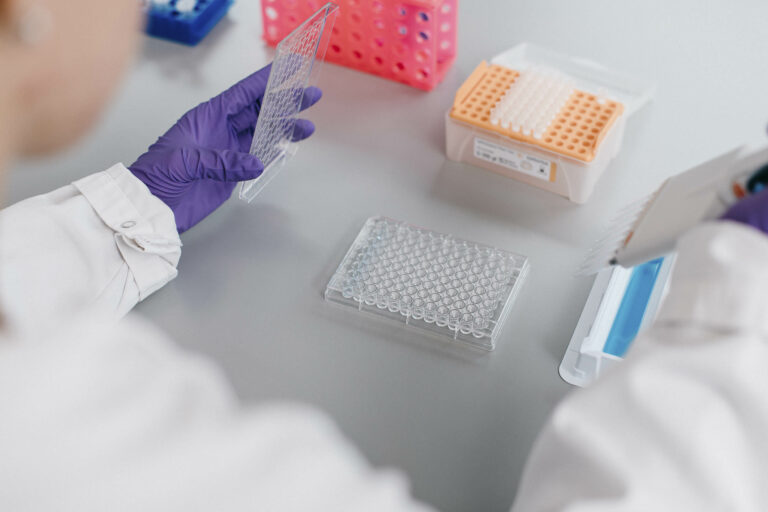Autologous tumour cell vaccines vs. dendritic cell vaccines: What’s best, and why?
Understanding the best approach for tumour vaccinations is of growing importance in the personalized cancer immunotherapy field. Current models use a variety of treatments, but two include the use of irradiated autologous tumour cells (TCV), or autologous dendritic cells loaded with tumour associated antigens (DCV). In a randomized trial of metastatic melanoma patients undergoing either TCV or DCV, DCV patient survival was far superior at 43.4 vs 20.5 months. Why was the response more effective when the same antigens were provided to the immune response? Dillman, Robert O., et al. brought some answers in a paper published in the Journal for immunotherapy of cancer in 2018). Looking at the cytokine “milieu” with the Quantibody 200 Biomarker Microarray Service helped the authors in understanding the differences in vaccine responses.
Presumably, the GM-CSF provided along with the antigens was driving a superior anti-melanoma response, but could one “see” that by looking at the cytokine milieu the patient was experiencing? Using RayBiotech’s Quantibody 200 Biomarker Service, the authors probed a very small subset of the randomized patients to explore this exact question. Most notably, the TCV vaccines induced a large elevated immune cytokine response across all of the major proposed cellular groups. However, the DCV response was much more muted across most groups, with some responding populations elevating and others decreasing their cytokine response. This may provide us a unique window into which populations the DCV models are targeting, and why this subtle targeting change can have such a large effect!
The 200 Biomarker services quoted in this articles was based on the use of Human Cytokine Array Q4000. tebu-bio laboratories, based near Paris, have been selected by Raybiotech to perform this service for the whole life science research community in Europe. This service is available from a large range of targets, up to 1000 human biomarkers for a large profiling option, down to a few targets in a quantitative format for more targeted studies.
 Among the targeted Quantibodys dedicated to cancer research, we can mention:
Among the targeted Quantibodys dedicated to cancer research, we can mention:
- Human Gastric Cancer Biomarker Array Q1 (QAH-GCB-1) – Detects 5 human gastric cancer biomarker proteins
- Human Immune Checkpoint Molecule Array 1 (QAH-ICM-1) – Detects 10 human Immune Checkpoint Molecules
- Human Cancer Biomarker Array 1 (QAH-CAN-1) – Detects 18 human cancer biomarker proteins
The above Quantibody series is a high sensitivity sandwich-based multiplex immunoassay based on fluorescence detection. An alternative membrane based technology has also been developed by Raybiotech to allow for chemiluminescence detection. Although less sensitive, this array format can be very easily used in a lab and provide useful data in simple profiling studies, advantageously replacing multiple western blotting analysis.
A few examples are:
- Human Cancer Discovery Array C1 (AAH-CAN-1) – Detects 10 human cytokines related to cancer biology
- Human Cancer Discovery Array C2 (AAH-CAN-2) – Detects 20 human cytokines related to cancer biology
- Human Cancer Discovery Array C3 (AAH-CAN-3) – Detects 30 human cytokines related to cancer biology
If you are not sure which Microarray option to choose from multiplex quantitation to large profiling, from Glass slide formats to membrane arrays, or if you want to know what lists of targets are available and from which species, feel free to contact me and I’ll be happy to help!




